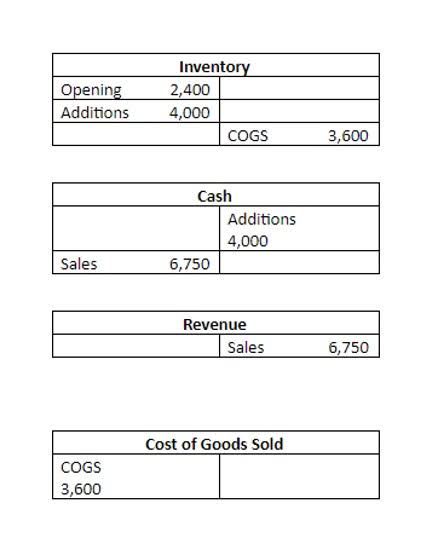
Regular workshops and updates on best practices help maintain a high level of competence within the team. Staff training programs should emphasize how to recognise signs of potential customer defaults, including late payments and changes in customer behaviour. Additionally, staff should understand the procedures for calculating the allowance for doubtful accounts and recording ledger adjustments. This knowledge enables teams to respond proactively to emerging risks and maintain accurate financial records.
Improve cash flow management with allowance for doubtful accounts
- Companies with a long operating history may rely on their long-term average of uncollectible accounts.
- The management of doubtful accounts can be streamlined by automating calculations, monitoring receivables, and generating reports through the use of technology.
- Instead of waiting until specific debts are confirmed as uncollectible, companies use this method to anticipate and record bad debts in the same period the revenue is recognized.
- By examining these trends over time, businesses can identify patterns that may indicate underlying issues such as deteriorating customer credit quality or economic downturns.
- Allowance for doubtful accounts can be calculated using methods like percentage of sales, percentage of accounts receivable, aging of accounts receivable, or historical experience.
Another important aspect is the historical loss rate, which is derived from past experiences of bad debts. For instance, if a business historically writes off 2% of its receivables, it might apply this rate to its current receivables to estimate the allowance. This method, while straightforward, requires regular updates to reflect any changes in the business environment or customer base. Having an allowance for doubtful accounts helps businesses comply with the Generally Accepted Accounting Principles (GAAP) and the International Financial Reporting Standards (IFRS). Both accounting frameworks emphasize the importance of recognizing potential losses in the same period that revenue is recorded. This aligns with the matching principle, ensuring businesses are not misleading stakeholders with inflated income statements or balance sheets.

Aging of Accounts Receivable Method
Management carefully examines an accounts receivable aging schedule to estimate what amount of each account will be uncollectible. Then a journal entry is made to the allowance for doubtful accounts is a contra asset account that equals: record the uncollectible balance by debiting bad debt expense and crediting the allowance for bad debt account. When an account is deemed uncollectible, it is written off by debiting the allowance for doubtful accounts and crediting accounts receivable. This action reduces both the receivables and the allowance balance, reflecting the actual loss.

Accounting for Holding Companies: Types, Reporting, and Strategies
- These platforms allow businesses to apply established estimation methods, track historical data, and generate detailed reports with ease.
- This method provides a more granular view of potential uncollectible accounts, allowing businesses to adjust their estimates based on the aging of their receivables.
- This method, while straightforward, requires regular updates to reflect any changes in the business environment or customer base.
- Compliance with these guidelines enhances the credibility of financial statements and ensures consistency across reporting periods.
- The choice of method depends on factors like sales volume, the nature of the receivables, and historical payment behavior.
Allowance for doubtful accounts can be calculated using methods like percentage of sales, percentage of accounts receivable, aging of accounts receivable, or historical experience. Each method involves estimating uncollectible amounts based on historical data, customer credit risk, or industry benchmarks. The chosen method depends on the company’s data availability and risk management practices, providing a buffer against potential losses from unpaid invoices.

Is allowance for doubtful accounts a debit or credit?
This method is particularly useful for businesses with consistent sales patterns and stable customer bases. This amount is recorded as a contra-asset on the balance sheet, reducing the total value of accounts receivable. Incorporating an QuickBooks allowance for doubtful accounts ensures that financial statements present a realistic view of a company’s receivables.

How to Streamline Debt Collection and Accelerate Cash Flow
Regular reviews of aging reports enable businesses to address overdue accounts promptly, reducing the likelihood Restaurant Cash Flow Management of bad debts and improving cash flow. Discrepancies between estimated and actual bad debts may indicate the need for adjustments to the allowance for doubtful accounts. Auditors work to identify these gaps, determine their causes, and recommend changes to improve future estimates. Adjustments may involve revising percentages, updating credit policies, or enhancing data collection processes to ensure accurate reporting.

Allowance for Doubtful Accounts: What It Is and How to Estimate It
- Accounting software provides real-time insights and simplifies processes, while automation solutions reduce manual errors and enhance efficiency.
- By analysing trends in doubtful accounts, businesses can refine their strategies to minimise future losses.
- For example, a retail business analyzing five years of data might discover that about 2% of credit sales typically go unpaid.
- Determining the right amount to set aside for potentially uncollectible invoices requires both art and science.
- It is important to understand that the allowance doesn’t protect against slow payments or lessen the impact of bad debt losses.
By applying this method, companies can prioritize monitoring and creating allowances for higher-risk clients or transactions. In this method, businesses use industry averages or benchmarks to estimate their allowance for doubtful accounts. For instance, if industry data shows that businesses in a particular sector typically experience a 3% default rate, a company in that industry might apply the same percentage to its receivables.
Use historical data to estimate uncollectible debts
For instance, if a business sees that an average of 3% of its accounts receivable have gone unpaid in the last five years, they can use this figure to predict future bad debts. This method works well for businesses with consistent customer behaviors and market conditions, making it reliable over time. Businesses apply a percentage to their outstanding receivables to estimate potential bad debts.
